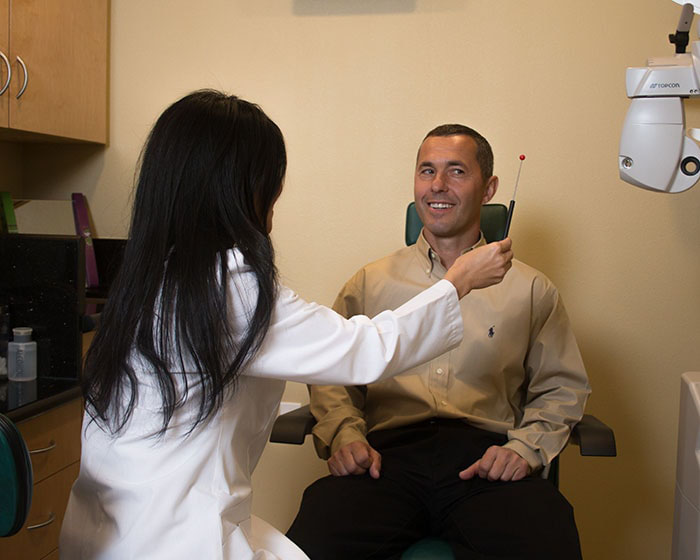The month of November is Diabetic Eye Disease Awareness Month. Diabetes has become so common in the United States that, according to the CDC’s statistical report on the disease, 9.3% of the population of the United States has the disease; this number translates to 29.1 million people.
According to Prevent Blindness America, diabetes is the leading cause of new cases of blindness in adults—and all people with diabetes are at risk for vision loss and blindness from diabetic eye disease. African Americans, Native Americans, Alaska Natives, Hispanics, Latinos, and older adults with diabetes are especially at higher risk.

In addition, an emerging body of research in diabetes, vision, and health care indicates that significant differences in the quality and equality of eye care exist throughout the United States, specifically in the African American and Latino communities.
More About the Different Types of Diabetic Eye Disease
Diabetic Retinopathy
Although people with diabetes are more likely to develop cataracts at a younger age and are twice as likely to develop glaucoma as people who do not have diabetes, the primary vision problem caused by diabetes is diabetic retinopathy, the leading cause of new cases of blindness and low vision in adults aged 20-65:
What a person with diabetic retinopathy sees
- "Retinopathy" is a general term that describes damage to the retina.
- The retina is a thin, light-sensitive tissue that lines the inside surface of the eye. Nerve cells in the retina convert incoming light into electrical impulses. These electrical impulses are carried by the optic nerve to the brain, which interprets them as visual images.
- Diabetic retinopathy occurs when there is damage to the small blood vessels that nourish tissue and nerve cells in the retina.
- "Proliferative" is a general term that means to grow or increase at a rapid rate by producing new tissue or cells. When the term "proliferative" is used in relation to diabetic retinopathy, it describes the growth, or proliferation, of abnormal new blood vessels in the retina. "Non-proliferative" indicates that this process is not yet occurring.
- Proliferative diabetic retinopathy affects approximately 1 in 20 individuals with the disease.
DID YOU KNOW?
- Diabetes is the leading cause of blindness in working-age Americans
- Almost 1/3 of diabetics don’t know they have the disease and are at risk for vision loss and other health problems.
- The most common diabetic eye disease is diabetic retinopathy which affects 5.3 million Americans age 18 and older.
- Once diagnosed with diabetes, you should schedule a complete eye exam, including dilation.
- Early diagnosis of diabetes can help reduce your risk of developing eye disease related to diabetes.
How to stay on TRACK to protect vision
Diabetic eye disease often has no symptoms in its early stages, and the only way to detect it is through a comprehensive dilated eye exam. Other things that people with diabetes can do to delay or slow down the progression of diabetic eye disease include:
T — Take your medications as prescribed by your doctor.
R — Reach and maintain a healthy weight.
A — Add more physical activity to your daily routine.
C — Control your ABCs—A1C, blood pressure, and cholesterol levels.
K — Kick the smoking habit.
You may have heard that diabetes causes eye problems and may lead to blindness. People with diabetes do have a higher risk of blindness than people without diabetes. But most people who have diabetes have nothing more than minor eye disorders.
With regular checkups, you can keep minor problems minor. And if you do develop a major problem, there are treatments that often work well if you begin them right away. Please visit your health professional regularly.
Make your appointment today
To make your appointment, simply give us a call (760)-948-3345 or
or
Due to COVID-19 safety protocols, all eyewear services are currently by appointment only. Please call to make an appointment.
At Golden Eye Optometry, we view good vision care as front line protection at every age. A routine eye exam can detect more than poor vision. It can shed early light on glaucoma, macular degeneration, cataracts and diabetes.